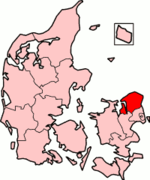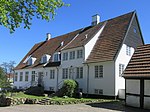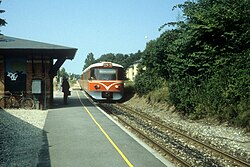Hillerød

Hillerød (Danish pronunciation: [ˈhiləˌʁœðˀ]) is a Danish town with a population of 36,043 (1 January 2023) located in the centre of North Zealand approximately 30 km to the north of Copenhagen, Denmark. Hillerød is the administrative centre of Hillerød Municipality and also the administrative seat of Region Hovedstaden (Capital Region of Denmark), one of the five regions in Denmark. It is most known for its large Renaissance castle, Frederiksborg Castle, now home to the Museum of National History. Hillerød station is the terminus of one of the radials of the S-train network as well as several local railway lines. The town is surrounded by the former royal forests of Gribskov to the north and Store Dyrehave to the south.
Excerpt from the Wikipedia article Hillerød (License: CC BY-SA 3.0, Authors, Images).Hillerød
Steinfeld (VGem)
Geographical coordinates (GPS) Address Nearby Places Show on map
Geographical coordinates (GPS)
| Latitude | Longitude |
|---|---|
| N 55.933333333333 ° | E 12.316666666667 ° |
Address
86
96187 Steinfeld (VGem)
Bayern, Deutschland
Open on Google Maps










